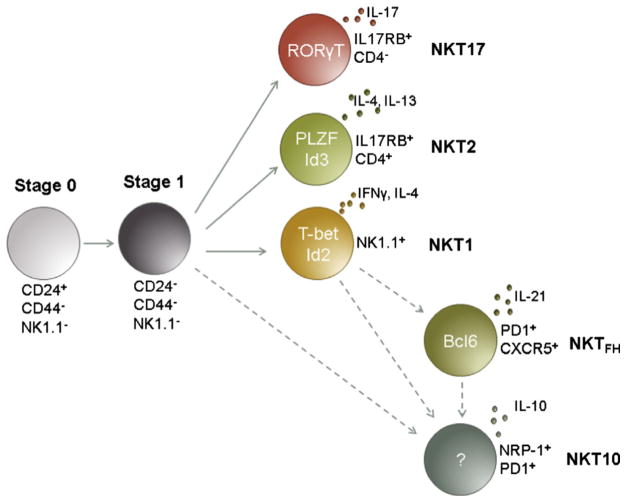Fig. 1.
There are at least 5 distinct known lineages of iNKT cells that arise from iNKT precursor cells (stage 0/1). Each terminally differentiated lineage is defined by expression of a unique selection of cytokines and transcription factors. NKT1 cells express high levels of TBET and release IFNγ and some IL-4 upon activation. NKT2 cells continually express PLZF and predominantly release IL-4 and IL-13 upon activation. NKT17 cells express RORγt, and release IL-17 upon activation. NKTFH express the transcription factor Bcl6 and develop after activation although it is not clear whether these cells develop from NKT1 precursors. Also unknown are the transcription factors regulating NKT10 cells, although, these cells can be defined by IL-10 production as well as expression of NRP-1 and PD1. The DNA binding proteins ID2 and ID3 have been shown to be major factors in the differentiation of NKT1 and NKT2 cells, respectively. Evidence points to a role for E proteins in NKT17 and NKT10 lineage differentiation, although further investigation will likely clarify how these cells are regulated.

